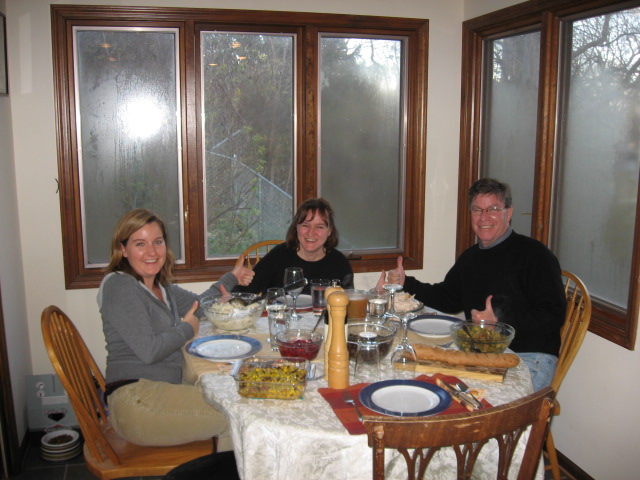Amy the French professor is originally from Minnesota. She thought the 1996 movie, Fargo, was a linguistics masterpiece, what with its ‘Yah, you betchas’ and ‘you don’t says’ and demonstration of the ‘Minnesota nice’ conversational style.
 Fargo seems like a distant memory, now that Sarah Palin has appropriated all the best lines.
Fargo seems like a distant memory, now that Sarah Palin has appropriated all the best lines.
Former VP candidate and current Alaska Governor Sarah Palin was in Wasilla today to do the traditional pardoning a local turkey ahead of Thanksgiving. Minutes later, a farm worker began slaughtering another turkey just a few feet behind her … plainly visible in the background of the video (below).
Governor Palin was told by the photographer what was going on behind her and allowed the interview to continue.
People for the Ethical Treatment of Animals (PETA) could sign Governor Palin up as an undercover slaughterhouse worker. As the N.Y. Times reported Wednesday, PETA is asking for prosecution of workers at the Aviagen Turkeys plant in Lewisburg, W.Va., in a complaint filed with the local sheriff’s office under state laws regarding cruelty to animals. …
The Aviagen video can be seen at www.peta.org. The scenes show stomach-turning brutality. Workers are seen smashing birds into loading cages like basketballs, stomping heads and breaking necks, apparently for fun, even pretending to rape one. …
Bernard E. Rollin, a professor of animal sciences at Colorado State University, said the workers’ actions were “totally unacceptable” and suggested that they be removed from working with animals and prosecuted.

 That’s because she went to the Coles Notes version — the Canadian Partnership for Consumer Food Safety Education – for her answers instead of doing some digging.
That’s because she went to the Coles Notes version — the Canadian Partnership for Consumer Food Safety Education – for her answers instead of doing some digging.

.jpg) But,
But,.jpg) No one knows where this recommendation
No one knows where this recommendation  I have no idea what that means.
I have no idea what that means. Food safety guru
Food safety guru  And the
And the 
